There’s something deeply satisfying about making a meal of ingredients foraged directly from the earth, not by some faceless stranger who’s sold his lucrative hedgerow hoard to a restaurant chef, but by your own hands.
Of course, there’s the thrifty delight in a free meal. £3 for a bundle of asparagus or marsh samphire for free? £2.50 for a punnet of raspberries or blackberries for free? A few quid’s worth of leeks or wild garlic for free? £2 for a bag of spinach and rocket leaves or black mustard and sorrel leaves for free? You get the idea!
But it’s more than that, isn’t it?
In today’s society of plastic-wrapped supermarket shopping, there’s a joy in reconnecting with nature as you search, pluck and pick wild food directly from the land.
Of course, across much of Europe and indeed, the rest of the world, wild food is still very much a regular part of the diet and entrenched in traditional food cultures. In my mind’s eye is an image of little old ladies across a hundred different landscapes, carefully guarding and passing on their hard-won knowledge of where to find abundant crops of mushrooms, the juiciest wild fennel, a wide array of herbs, fruits and nuts…
Here in Britain, where is this is the exception not the rule, there’s more than a little romance in that image.
Foraging and Cooking
Simon Day, founder of unearthed, has discovered during his travels around Europe, that many areas still have a thriving wild food culture. Indeed, he has found that many producers of local and regional food specialities, of the type he seeks for unearthed, are very much aware of what the land around them has to offer.
A few weeks ago, Simon invited a small group of food writers and bloggers to join him on a special foraging and cooking day organised and run by Caroline Davey. Caroline is the founder of the Fat Hen Wild Food Foraging And Cooking School, a few miles from Land’s End in Cornwall.
When you learn about Caroline’s life, it seems almost inevitable that she should be doing what she does now. Much of Caroline’s childhood was spent living in the Far East, Africa and England; everywhere she made a deep and lasting connection with nature. Whether tramping around in the British countryside picking mushrooms, berries and chestnuts or eating lotus seeds in the early morning mists of Kashmir with Mr Marvellous, the flower seller, Caroline developed a fascination with wildlife and wild food. In addition, her Welsh mother passed on a love of good food, cooking and entertaining that was very much a part of family life. Studying and qualifying in Zoology and Environmental Impact Assessment lead to a 12 year career as an Ecological Consultant, most of it in Cornwall, where Caroline visited many of the county’s wildest corners to record and document habitats and species. She honed her plant identification skills and developed a deep understanding of natural ecosystems, the impact of farming methods and local wildlife conversation issues. But Caroline felt she needed a more interactive relationship with nature than merely recording and reporting on it. As she taught herself about the plants around us, she wanted to know what they meant to us and how we could best use them. After a year as a freelance forager, during which Caroline became intimately familiar with what could be foraged where and when during the year, she started offering foraging courses a few years ago.
Our day with Caroline was hugely enjoyable. Waterproof coats and shoes protected us from the rain as we took a walk in the local countryside, learning how to identify a wide range of wild plants and how best to collect them, tasting and collecting as we went. Even in the rain couldn’t dampen our enthusiasm as Caroline brought nature’s larder alive for us.
We returned back to the warmth of Fat Hen, located in a converted goat barn and the family farm house kitchen.
There, Caroline and Simon had arranged for local chef and teacher Mark Devonshire to give us a demonstration of how to use the wild food we’d foraged, in conjunction with some delicious unearthed products such as rillettes and chorizo.
Mark spent 17 years working for Rick Stein at The Seafood Restaurant in Padstow, the last 8 of which were as head lecturer at the Padstow Seafood School. These days he teaches at Cornwall College where he shares the joys of food with eager youngsters. His latest class were due to graduate just after we attended the course, and his pride in their success and hope for their future was very clear. We sat around the beautiful big table smelling and tasting the tidbits Mark and Caroline prepared and offered.
After the cooking class, we enjoyed a delicious meal that made full use of locally foraged ingredients.
Pork Rillettes with Pickled Rock Samphire Served on Soda Bread Toast
Ingredients
- Pork rillettes
- Toasted soda bread
- large handful rock samphire , washed and patted dry
- 300 ml cider vinegar or white wine vinegar
Pickling Spices
- 1 tbsp coriander seeds
- 1 bay leaf
- 1 clove garlic
- pinch chilli flakes
- 1 tsp black peppercorns
Instructions
- Heat up the cider vinegar with the pickling spices in a saucepan until boiling, take off the heat, add the rock samphire and transfer to a sterilised glass jar. Seal and leave for at least a month before eating.
- Serve the pork rillettes on top of soda bread toast with pickled rock samphire laid on top.
Rules for Foraging Safely and Responsibly
Caroline was keen to stress to us a number of key rules for foraging, some of which I’ve paraphrased below.
- Only pick something that you are 100% positive you have identified correctly. As we saw during the day, many plants are easy to confuse and some are deadly. It’s not worth taking chances.
- Leave enough for the plants to grow back and use a scissor or knife to cut cleanly.
- Don’t deplete rare species. There are plenty of common plants that grow in abundance.
- The exception to the above is invasive plants such as three cornered garlic (Allium triquetrum), which originated in the Mediterranean. Three cornered garlic is a different plant to our native wild garlic (Allium ursinum); both can be foraged and used in cooking, but you can also dig up the bulb of the former without worry.
- Be aware of pollution. Find out if fields have been sprayed, avoid picking along heavily trafficked roads and next to any paths where dogs are commonly walked.
- Get permission from landowners before foraging on private land.








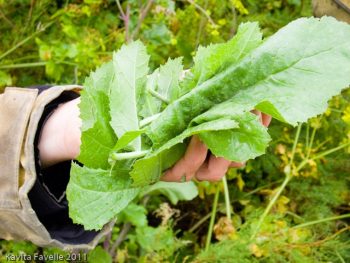




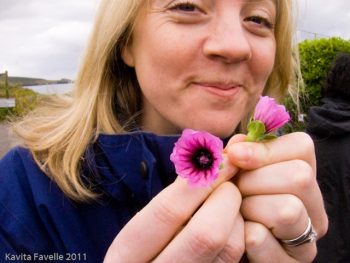




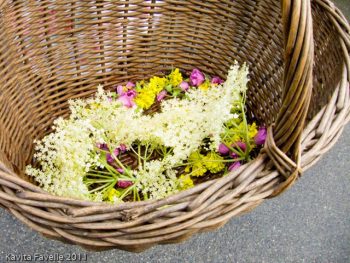




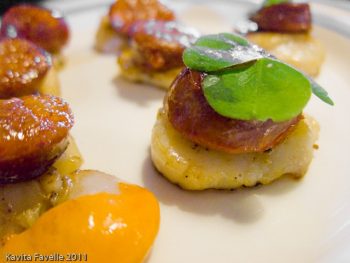











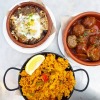
Please leave a comment - I love hearing from you!7 Comments to "Pickled Rock Samphire & Pork Rillettes + Rules For Foraging Safely & Responsibly"
I'm glad you listed the rules as well – very useful. Looks like you had a fun day!
That looks amazing! I would love to learn from the experts like that!
These look delicious – and I imagine all the more so for the amount of effort put in to the finding! Definitely worth a word of warning about what you eat and find though – a family friend ate some foraged mushrooms with disastrous consequences and is only just recovering several years down the line.
(sorry for the more serious note, post is fab btw!)
That pickled rock samphire was bloody gorgeous eh?
Number 1 in the rules is particularly important. I was positive I found black mustard close to where I live but after a nibble, not so. Didn't kill me or anything but made me even more aware. In other words, don't just jump in and stuff random plants in your mouth!
MiMi, yeah the rules are pretty important, it's definitely worth going out with experienced foragers before going solo, I'd say!
Foodycat, it was very good, can thoroughly recommend it. I also really enjoyed the foraging course with Mat Follas at The Wild Garlic, run by the guy who forages for Mat's restaurant.
TheLittleLoaf, definitely very important to know what you're doing, if there are any questions at all, best not to eat it. Too much of a real risk.
Daisy, bloody gorgeous and yep, definitely easy to misidentify, so many similar looking plants!
What a fun read, Kavey! I'm always too chicken to forage in suburbia, but I do feel a bit earthmothery when I go outside and pick weeds from the garden for the salad bowl! 🙂
Celia, definitely worth getting a decent guide book so you can find some goodies in the locality. Trouble with suburbia is that, by the time one has ruled out plants growing along busy roads, there are few spots left, and then you need to rule out dog fouling routes…!!